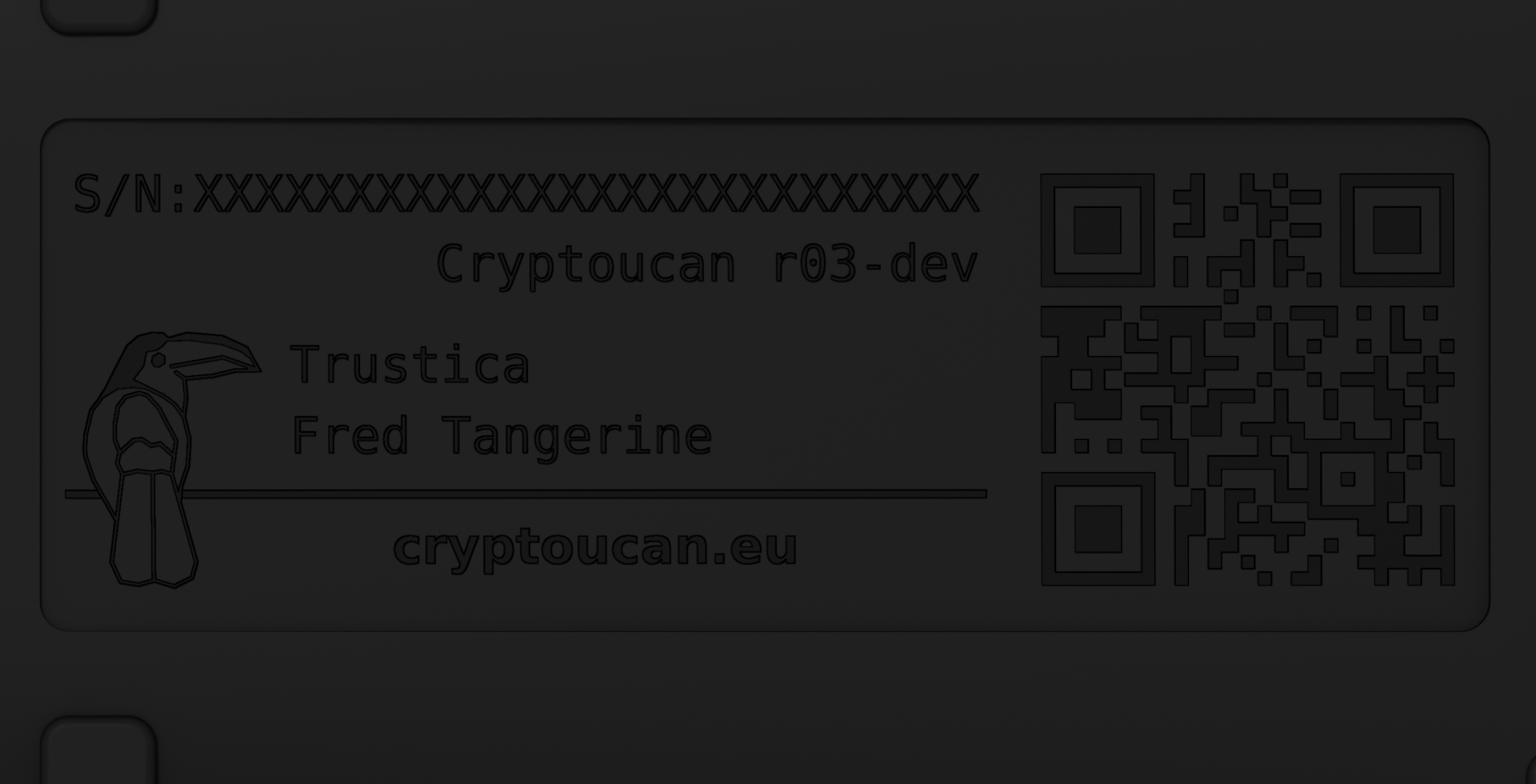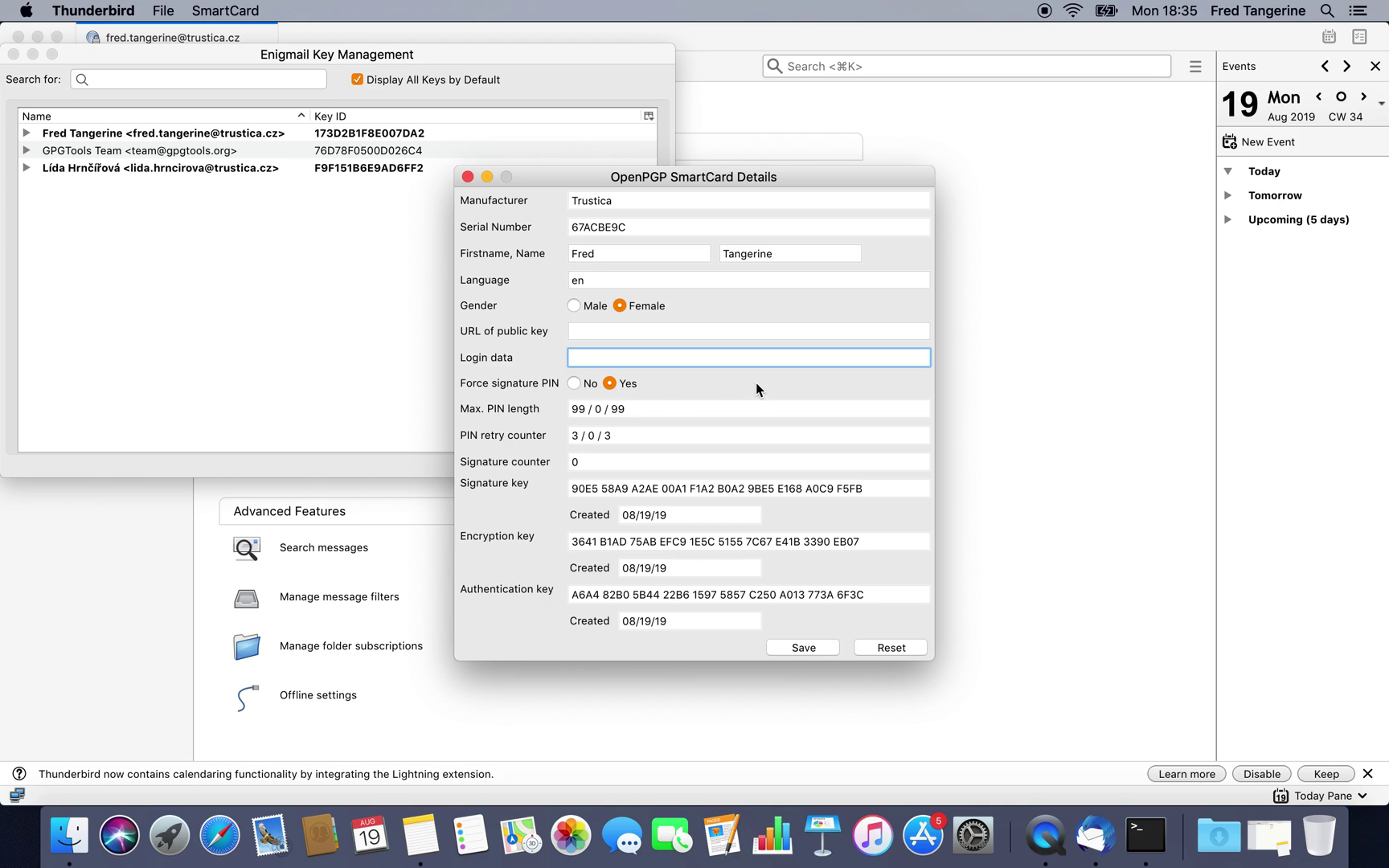Cryptoucan™ usage: Personalization on macOS
Written by Lída Hrnčířová on 2019-08-29
cryptoucanIn today's blog post we will show which personal information you can store on Cryptoucan™ and how to change it on macOS. You can also watch the instructional video on this topic that's at the end of this article.
Although Cryptoucan™ has laser engraved customizable markings[1] on the backside, it can be handy to have editable user identification, too. We understand that our device can be bought by companies that do not want to permanently assign the tokens by engraving user's name on it. That's why you can have holder's name inside. This gives you the opportunity to re-use tokens.

Picture 1: Laser engraving on the backside of the device[2] If you want to see the step-by-step video guide, feel free to watch this video.
Thic action can be done using Thunderbird email client with Enigmail add-on.
-
Open Thunderbird
-
Click the Menu button
-
Hover over the Enigmail submenu
-
Choose Key Management option inside the Enigmail menu
Enigmail Key Management window will pop up
-
Select File option at the top menu bar
-
Proceed with Manage Smartcard option
Now we got to OpenPGPG SmartCard Details window. Here is where the action takes place!

Picture 2: OpenPGPG SmartCard Details window with personal details filled in Before we will be able to edit anything in this window, we have to:
-
Click SmartCard option at the top menu bar
-
Proceed with Edit Card Data
As you can see, these are the fields you can edit:
-
Firstname, Name - this is the most important field if you want to make sure that you can easily find out the holder's name,
-
Language - setting up the language doesn't have any impact on functioning of the device but if you want to set the language anyway, use the standard ISO 639-1[3] which assigns two letter abbreviation to each language,
-
Gender,
-
URL of public key - in case you want to use your Cryptoucan™ on multiple computers, having a valid public key URL here will help GnuPG recognize your token,
-
Login data - typically your login username if you plan to use Cryptoucan™ for authentication,
-
Force signature PIN - by selecting "yes" in this field, Cryptoucan™ will ask you to enter user PIN every time you try to create a digital signature.
Even if you don't want to save your personal information inside the token, please make sure that at least the toggle in the "Force signature PIN" field is set to "Yes" - which is an important security feature.
Here you can watch our instructional guide that will help you with setting up Cryptoucan™:
Video 1: Cryptoucan™ usage: Personalization on macOS And that's it! Thank you very much for reading, we will see you next week!
References
- More info: https://trustica.cz/en/2019/02/14/cryptoucan-engraving-customizations/
- More info: https://trustica.cz/en/2019/02/21/cryptoucan-usage-first-look/
- Wikipedia: List of ISO 639-1 codes: https://en.wikipedia.org/wiki/List_of_ISO_639-1_codes
